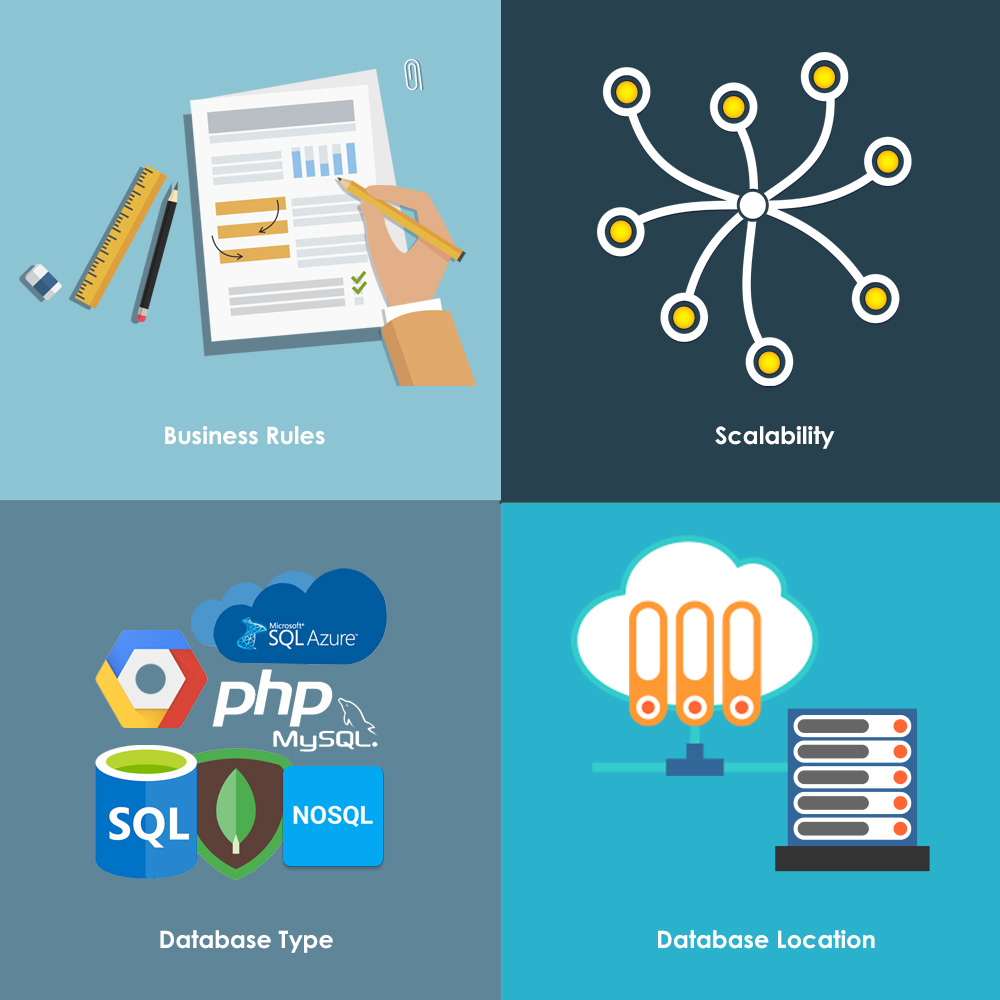Database Design and Maintenance
Data Integrity And Speed
Storing and retrieving information with speed and accuracy is important to any properly functioning project. Whether you need a new database or refactoring an existing, the reasoning and standards established behind the design are paramount.
Do It Right The First Time
Above all else, the most important part of a database design is planning ahead. Our expert database engineers take the time to thoroughly plan a design to prevent any oversight.
Purpose of a Database
The data you need to store and how business operations will change or retrieve data, is absolutely essential for a successful database.
Decision on Technology
Whether the source or the data will originate from a local server-based database or a cloud-based DBaaS (Database as a Service) is a critical decision before any design is finalized.
Database Design Goals
Exceptional database design is focused on availability, reliability, currency, consistency, flexibility and efficiency.

How do we create amazing database design?
Discovery
We always start by understanding your company and what you want to accomplish. We gather information through discussion and any materials available and recap what we've learned.
Understanding the business rules and operations of a project, before making any design decisions is a critical decision point.
Business Rules
What data does business operations require? This is essential to identify the entities needed in the design and for database normalization.
Scalability
We identify what might hinder scalability and provide solutions or options that increase scalability to expected growth.
Database Type
What type of database fits the project? We'll receommend the right solution using SQL Server, Oracle, MySQL, NoSQL or AWS.
Database Location
The hardware investment, security considerations, and ongoing cost of services and maintenance shape the decision that fits the project perfectly.

Data Model Planning
Our expert database engineers take the time to thoroughly plan. This stage is important to be sure there is no oversight that can add cost and time to a project.
We summarize findings and prepare a visual respresentation to communcate findings and recommendations that fit the business rules.
Find Entities
Everything you want to put into a database can be categorized as people, things, events, and locations. Taking what we've learned and classifying the entities help bring form to a visual representation of the data.
Determine Relationships
The next step is to determine what the relationships are between the entities we've uncovered. How one entity acts with another affects this relationship.
Identify Attributes
There are data elements that need to be saved with each entity. These are data points about each entity that help tell a story about the entity and make up the fields in a table.
Validating Data Model
The unvailing of the database design includes a visual representation to help communicate the data model, as well as the recommendations on the data source type and location.

Development
After we've worked through our discussions and data modeling stages, we know we're on the right path. The next part of the process is to develop the database and prepare for production.
These tasks are dependant on each other and are completed together before the project can continue or be connected with the application.
Analysis
A full analysis of the findings in the design document is performed confirming the system is set up to do what is expected.
Implementation
The system hardware and/or software is implemented in stages to allow for validatation and testing before a final system is released to production.
Development
Development begins along the projected timeline and sequence. Checkpoints are incorporated to keep you informed of task and milestone completion.
Testing
Testing will compare the system against the original design documents and will include documentation of any exceptions. Any errors and bugs that require a change in the design and implementation are addressed.

Application Connection
Assuring proper connection to an application is the next most important part of this production. The majority of the work has gone into the database. Now it's time to see the result.
Whether the application is ready for connection or id being developed based on the database, there will be some refinement and learning.
Refinement
The database set up is validated and tested for performance and access as well as confirming it's security.
Queries
The data the application requires might have new queries to function and specific data formats to be returned.
Learning
During development, there may be newly identified attributes or complex processes identified to streamline operations. These are additions as we finalize development.
Maintenance
Finally, a maintenance plan is discussed and put into place for any manual or programmatic processes.
